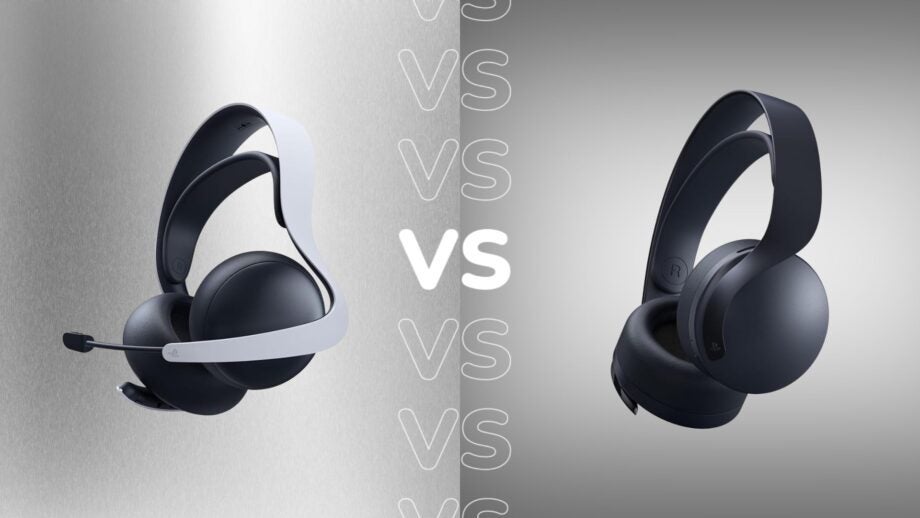PlayStation Pulse Elite vs PlayStation Pulse 3D: Which should you pick?

Sony has recently launched its latest PlayStation headset offering, the Pulse Elite. Boasting features such as lossless audio and a retractable microphone, the Pulse Elite is a more premium offering to the PlayStation Pulse 3D.
Is it worth spending more for the premium Pulse Elite or is the Pulse 3D perfectly capable for your gaming and communicating needs?
We’ve reviewed both the Pulse Elite and Pulse 3D and compared the two so you can decide which is better for you.
Design
Both the Pulse Elite and Pulse 3D sport a similar black and white design which mirrors the PlayStation console.
While the Pulse 3D has internal dual microphones, the Pulse Elite instead has arms which extend towards your face. The left arm also has a retractable microphone boom offering better pick-up and performance than the Pulse 3D’s internal microphones.
The earcups on the Pulse Elite were reported by our reviewer as being “large and pillow-soft” while the earcups of the Pulse 3D “hug against your head with only the smallest amount of pressure.” Even so, our reviewer did note that the Pulse 3D proved somewhat irritable after five hours of gaming.
Both the Pulse Elite and Pulse 3D feature a soft and flexible comfort band beneath the head strap to automatically adjust the fit, with our reviewer hailing the Pulse 3D as “supremely comfortable to wear for extended play sessions.”


Features
The Pulse Elite cleverly features PlayStation Link, a wireless technology built into the new PlayStation Portal handset for quick and automatic connection without the need for Bluetooth. This is missing from the Pulse 3D, which means it can’t be wirelessly paired to the Portal.
Even so, both headsets come equipped with a dongle to insert into PS4 and PS5 consoles and both are compatible with a PC too.
While both headsets use USB-C charging, the Pulse Elite goes one step further and has an included wall-hanging charging accessory, which lets you sit the headset onto the point for wireless charging.


Audio
Our reviewers have praised both headsets for their immersive audio quality, as both are implemented with PlayStation’s 3D Audio. Our reviewer hailed wearing the Pulse Elite as “akin to an IMAX experience” thanks to the wide spatially aware soundscape and an intense but never overwhelming bass.
Although the Pulse 3D is a more budget option, our reviewer said they “quickly abandoned more expensive, experienced devices” in favour of the Pulse 3D. Even so, the Pulse 3D’s overall audio quality does suffer in busier scenarios.
Our reviewer also suggested that the Pulse Elite isn’t a good all-in-one headset for gaming and general music listening, as it has a tendency to make music performance sound tinny, distorted and lacks detail.
Microphone
The Pulse Elite features Sony’s AI reduction technology which limits background noise and offers great clarity and pick-up. As mentioned above, although the Pulse Elite isn’t the best option for music listening, it does successfully double up as a productivity tool making it ideal for Zoom meetings.
As the Pulse 3D’s microphone is built into the headset, it naturally isn’t as high calibre as the Pulse Elite. Even so, our reviewer still said the Pulse 3D is more than capable when gaming with friends and taking part in Zoom meetings.


Pricing and availability
The PlayStation Pulse Elite is the more premium offering from Sony and currently retails at £129.99/$149.99/€149,99. As the budget option of the two, the Pulse 3D headset currently starts at £89.99/$99.99/€99.99.








